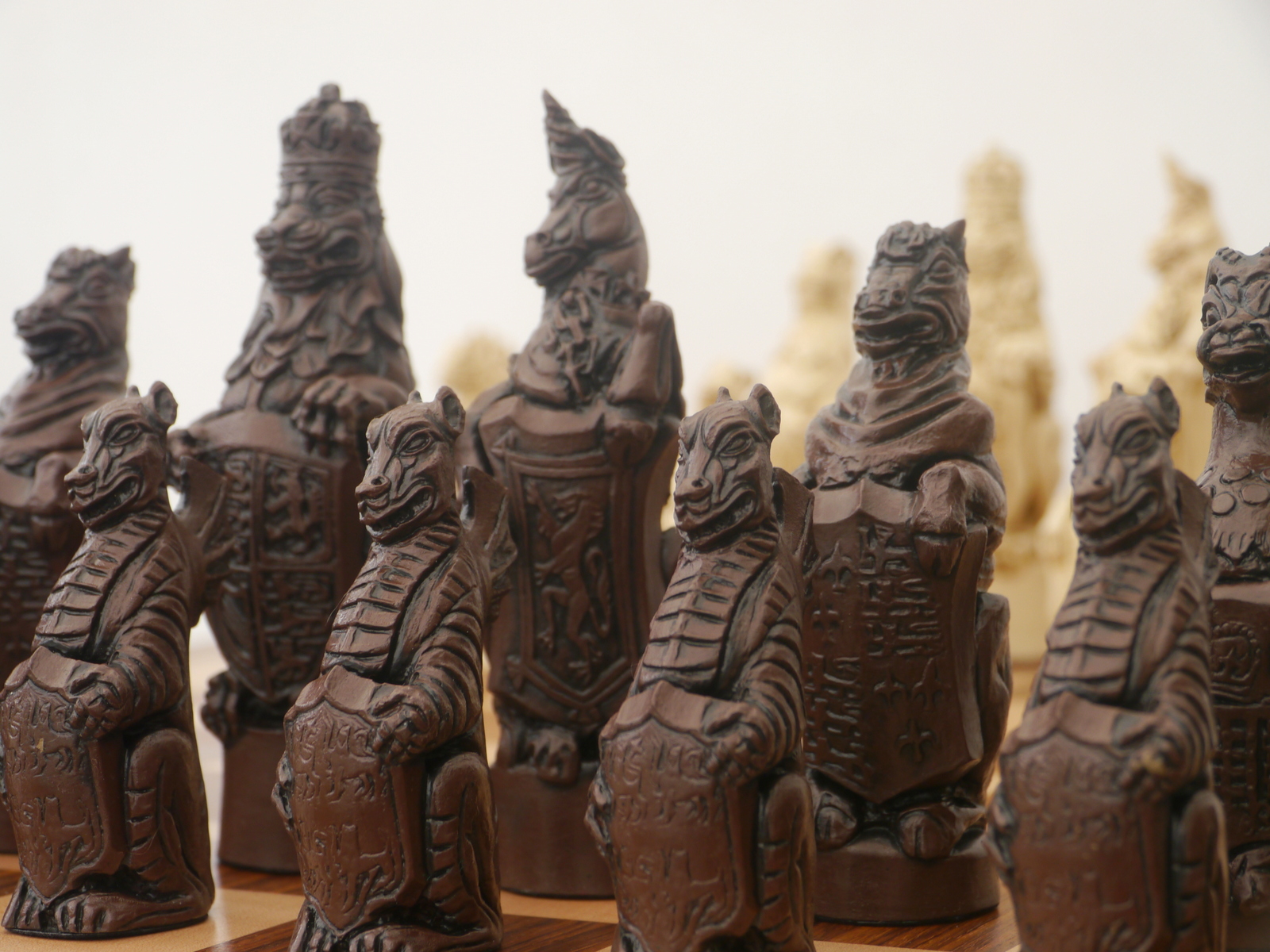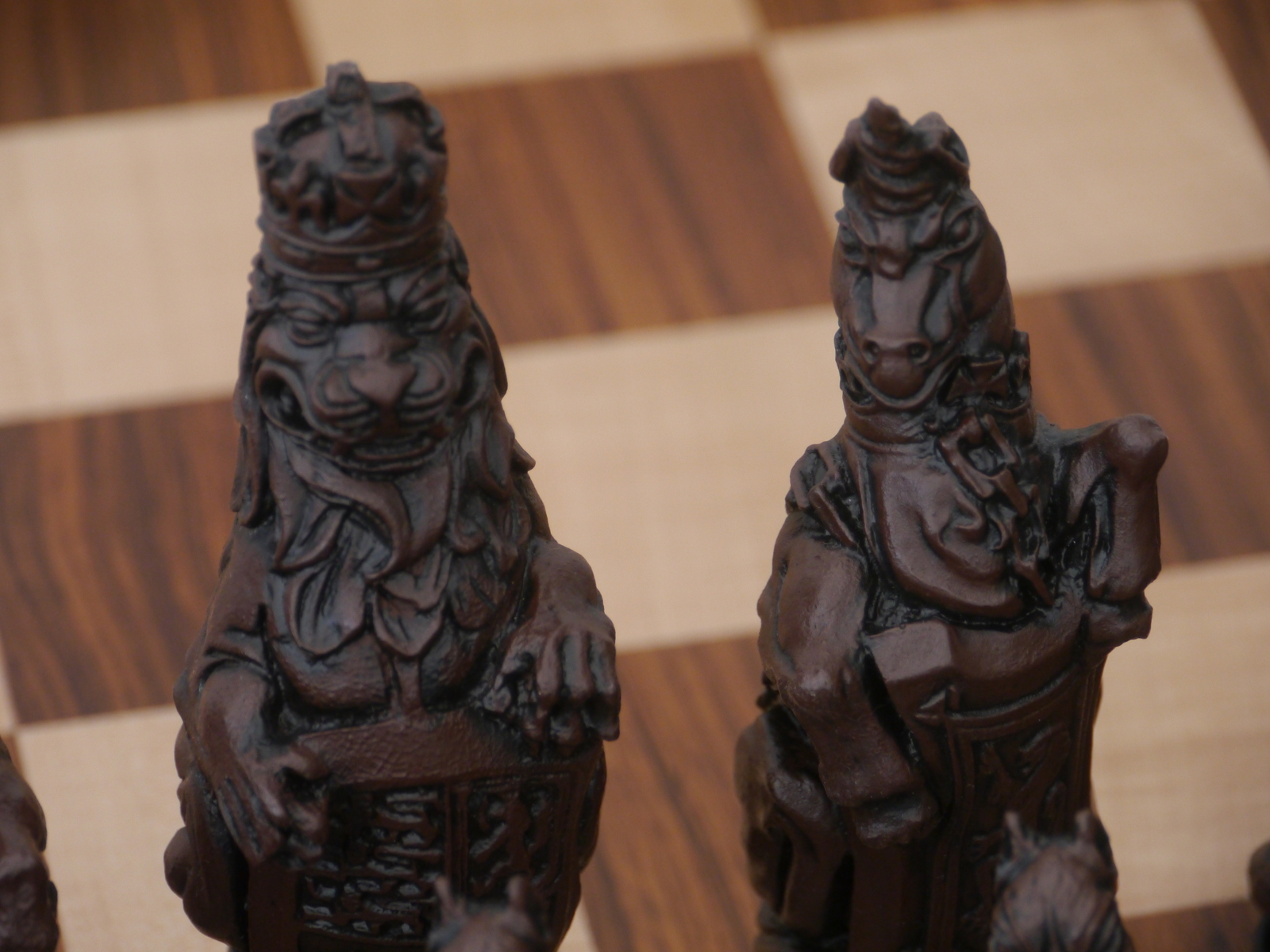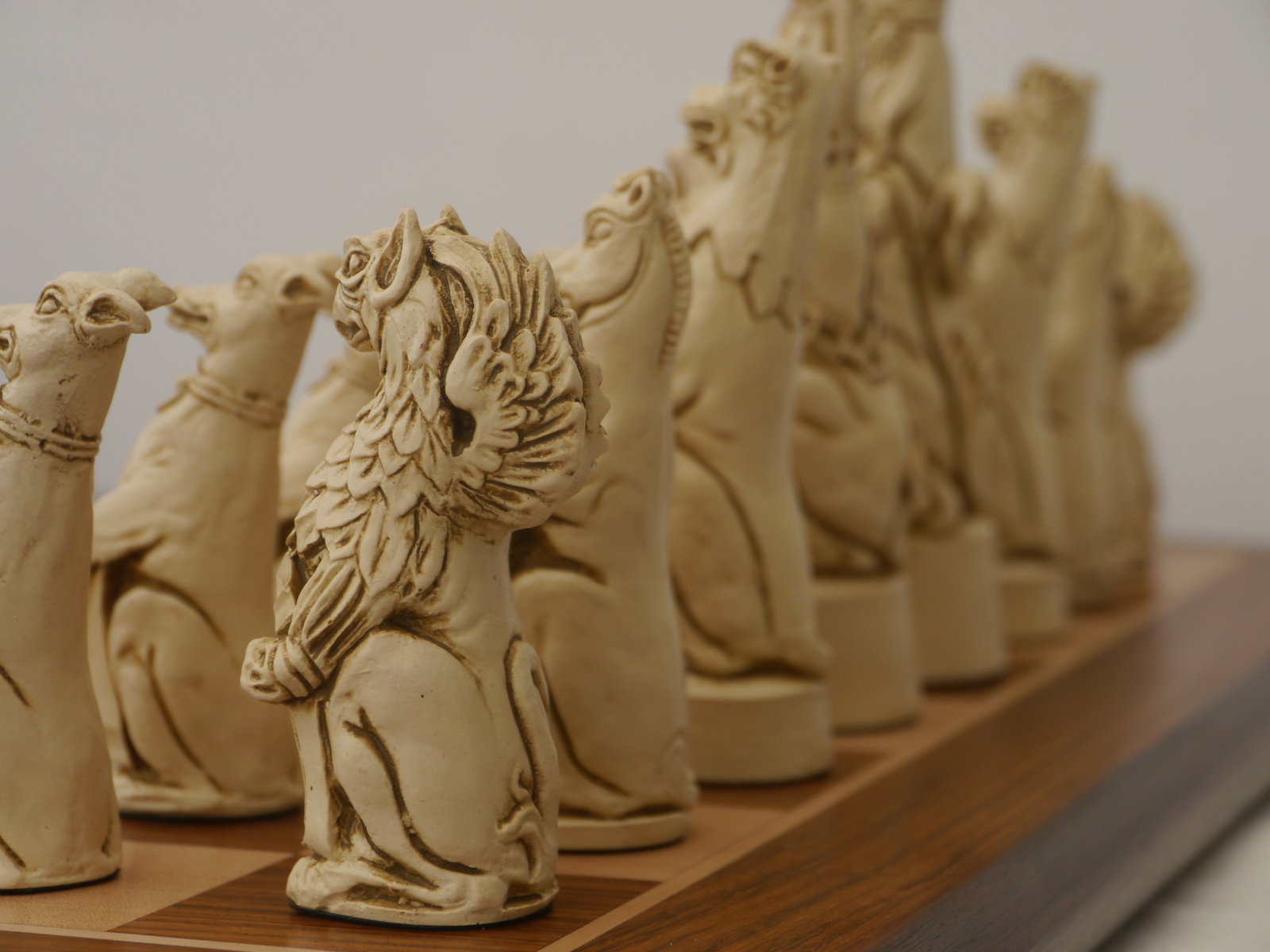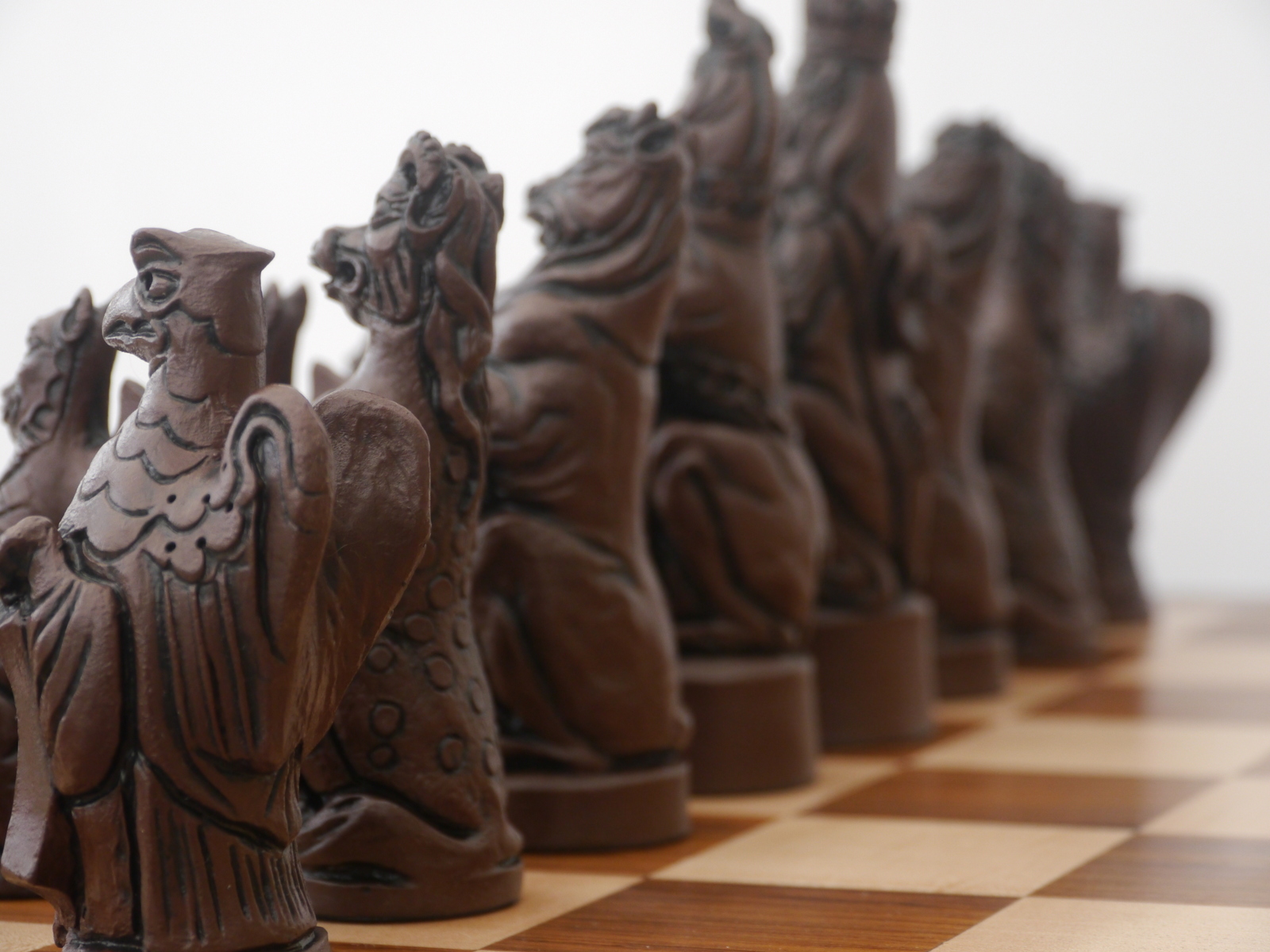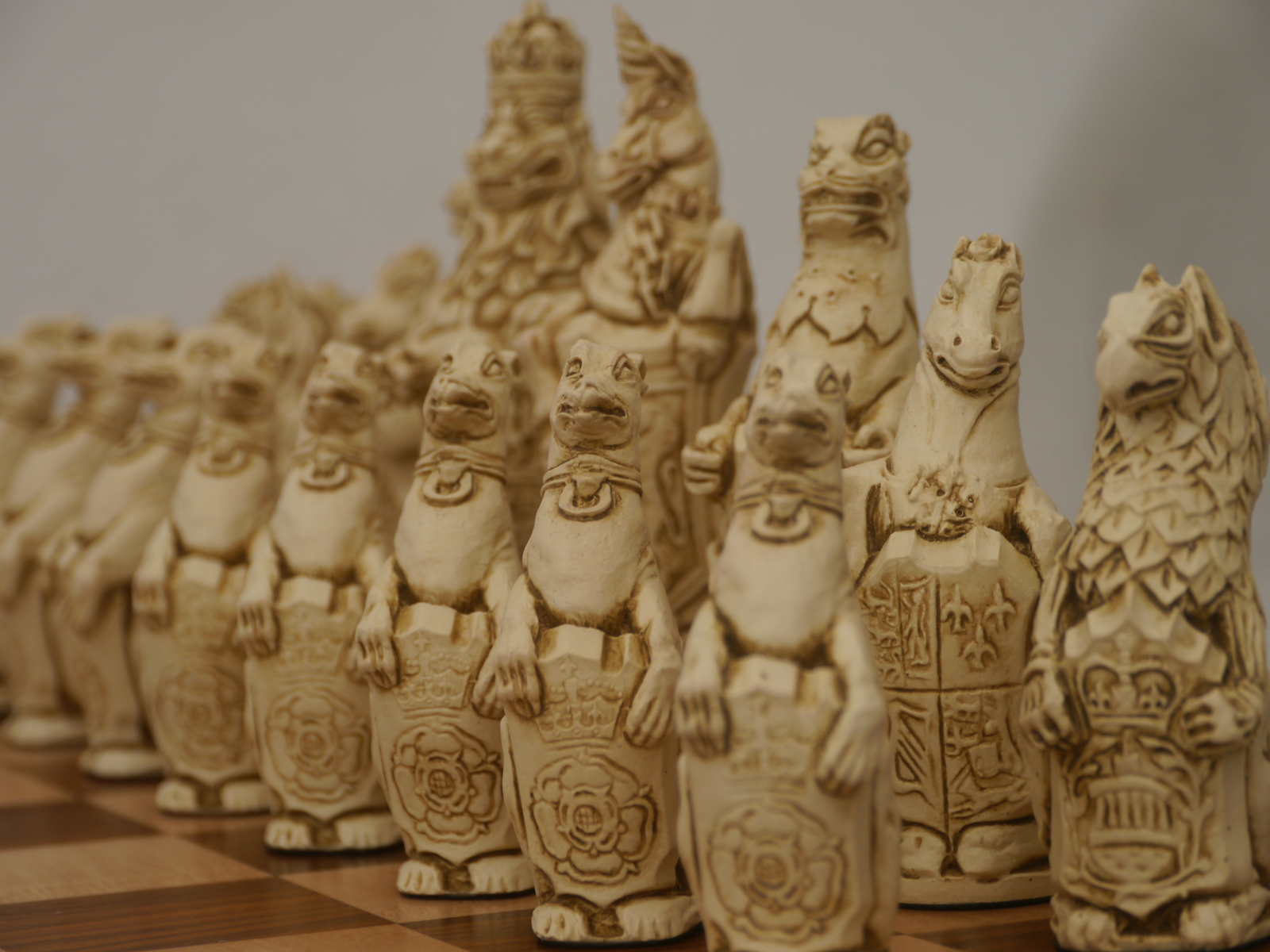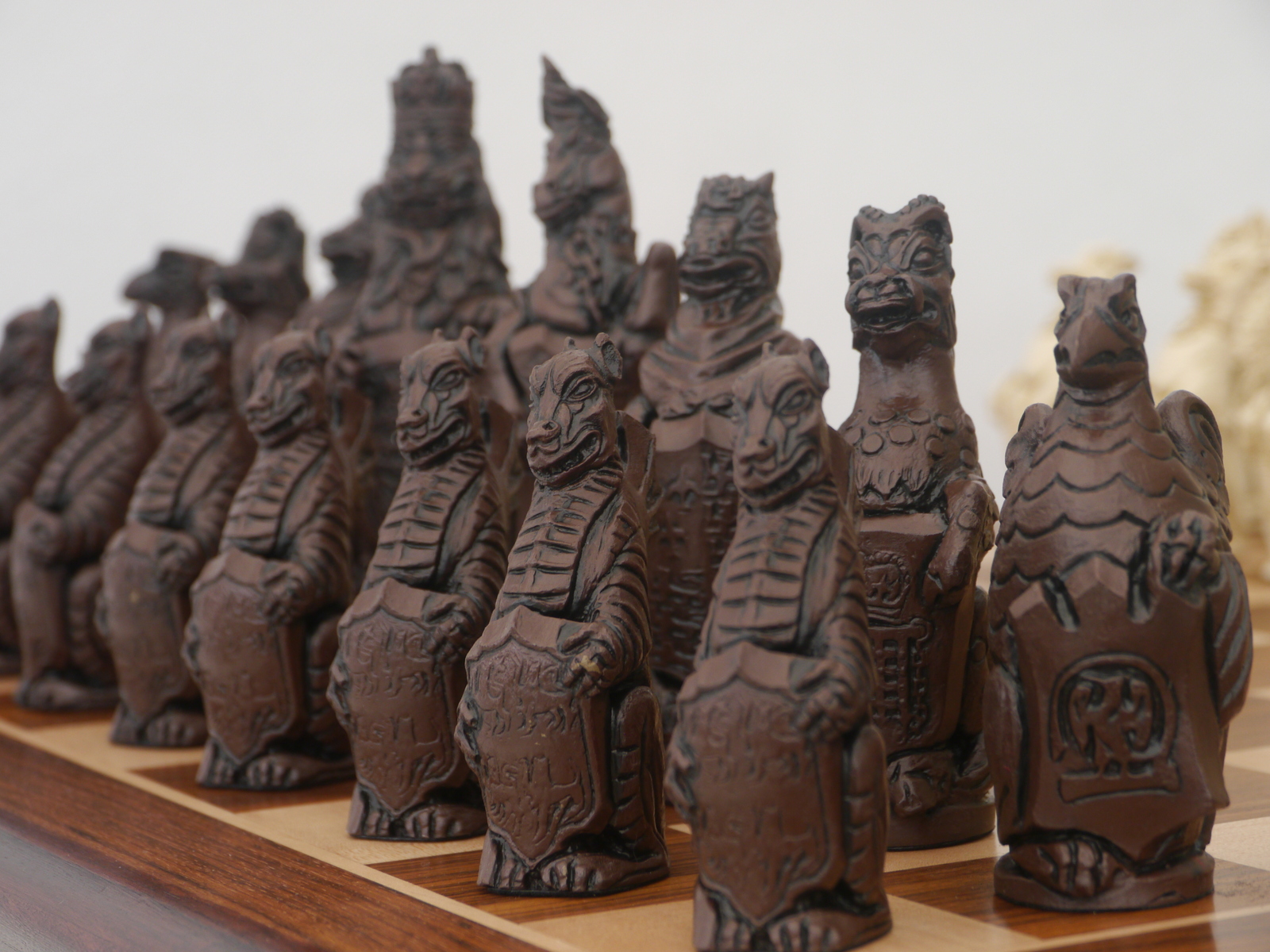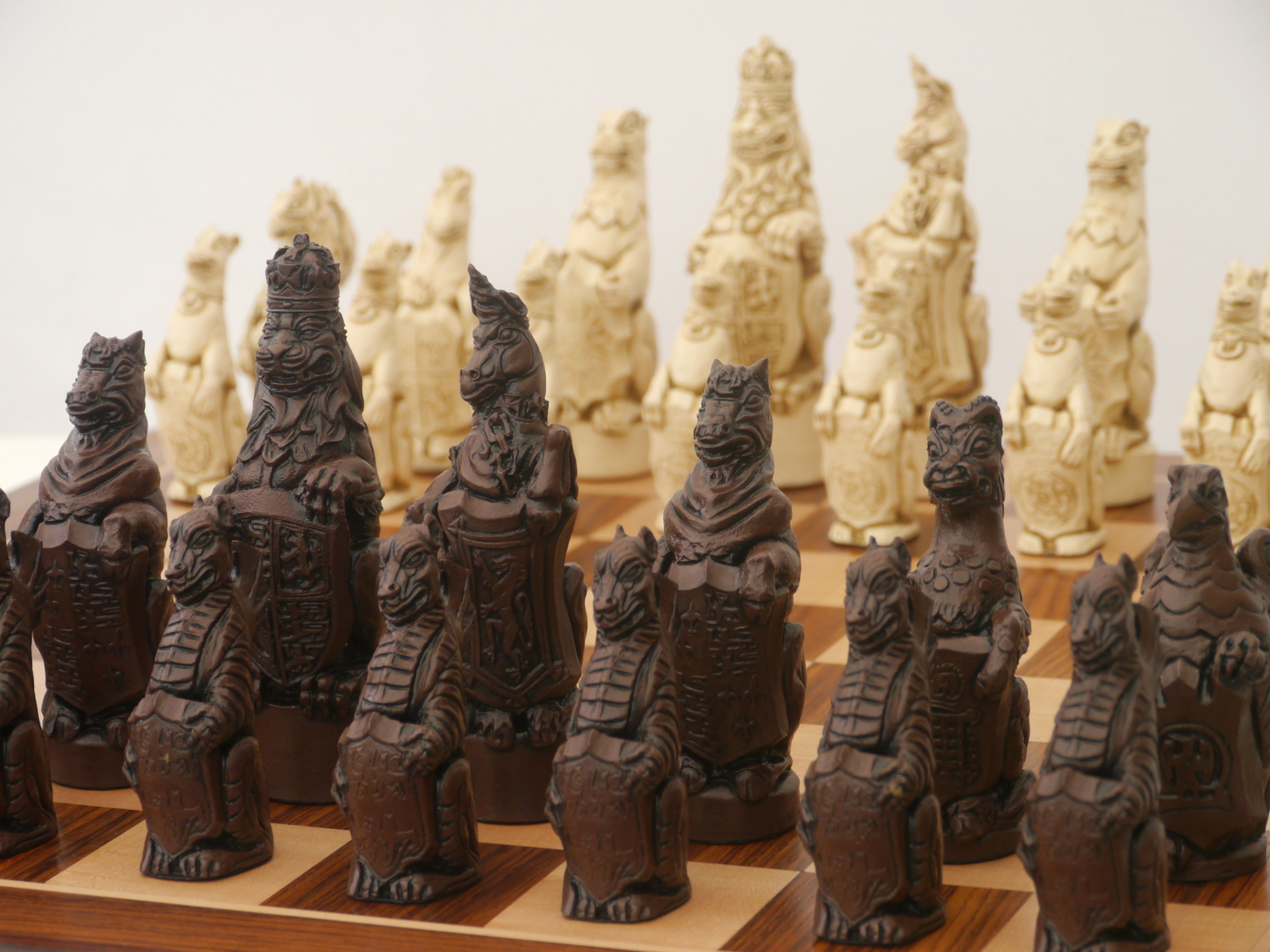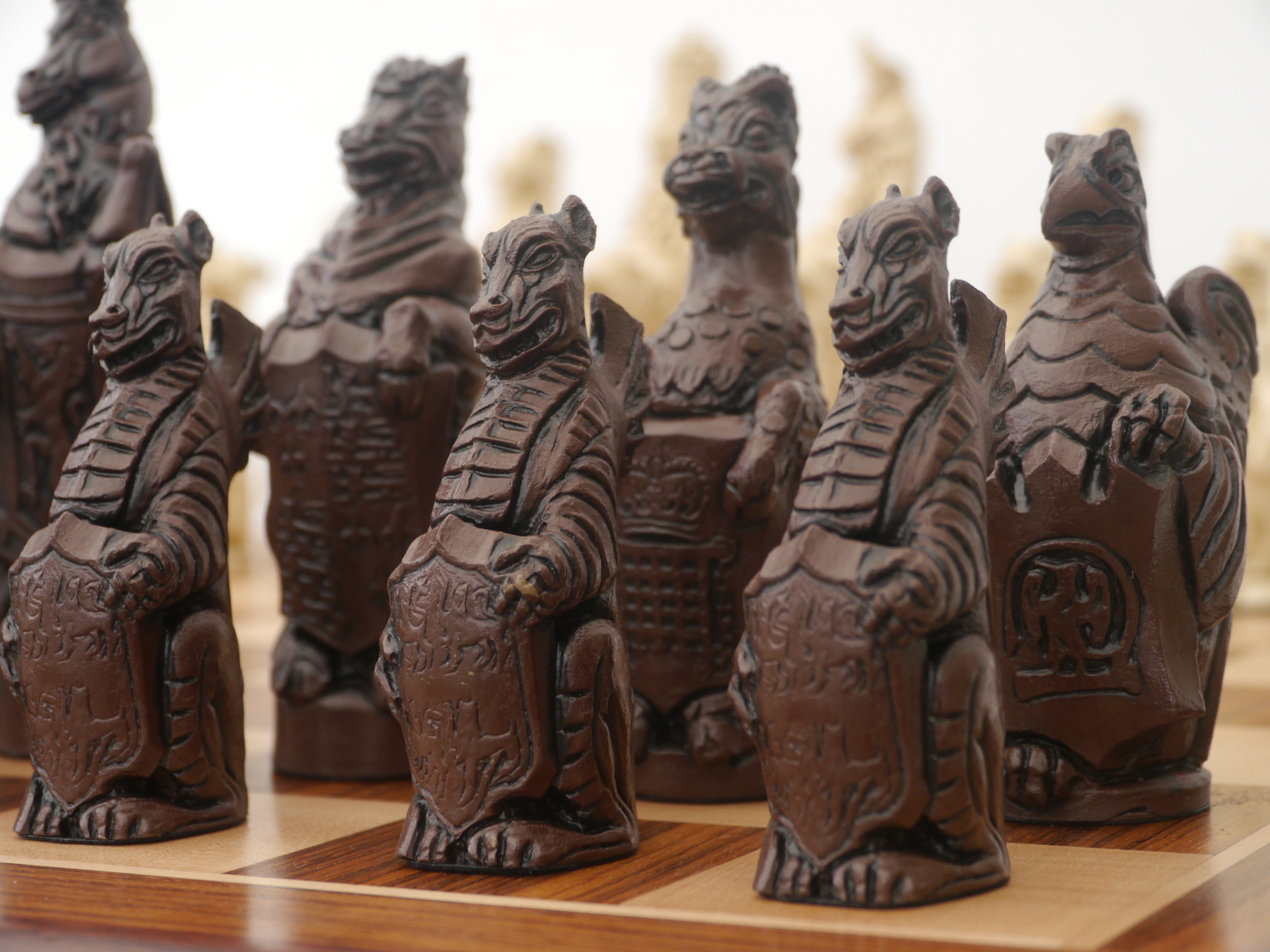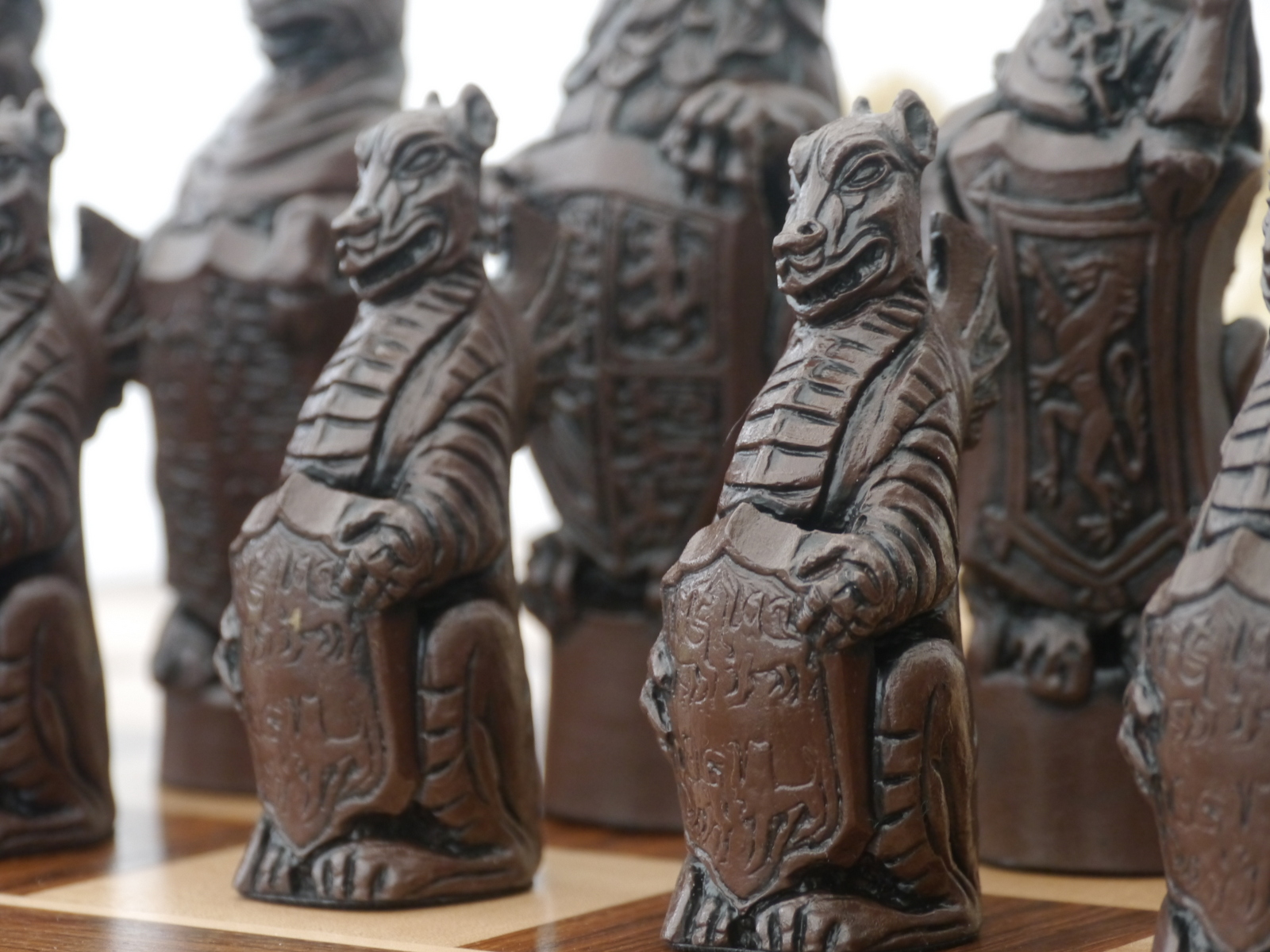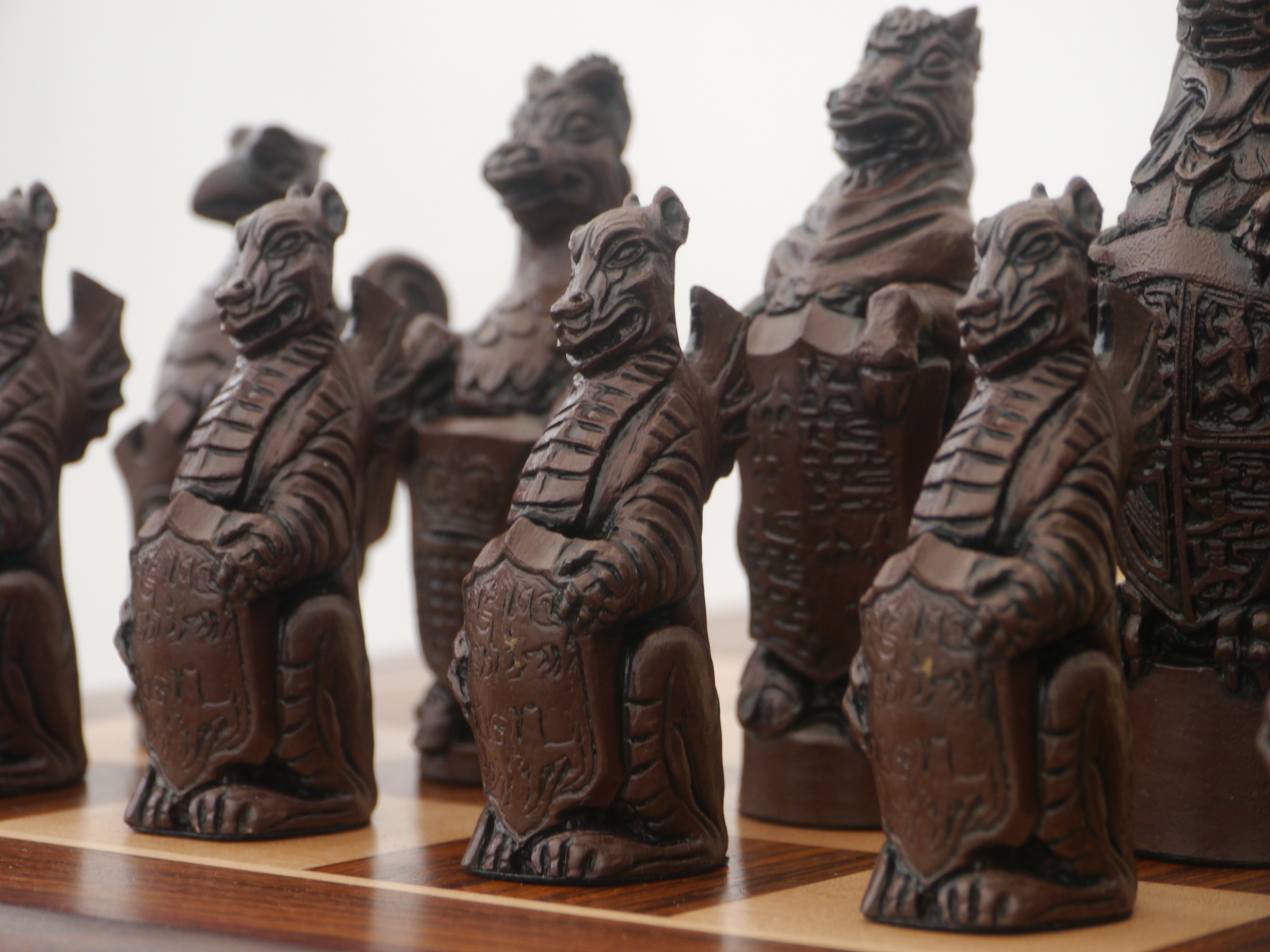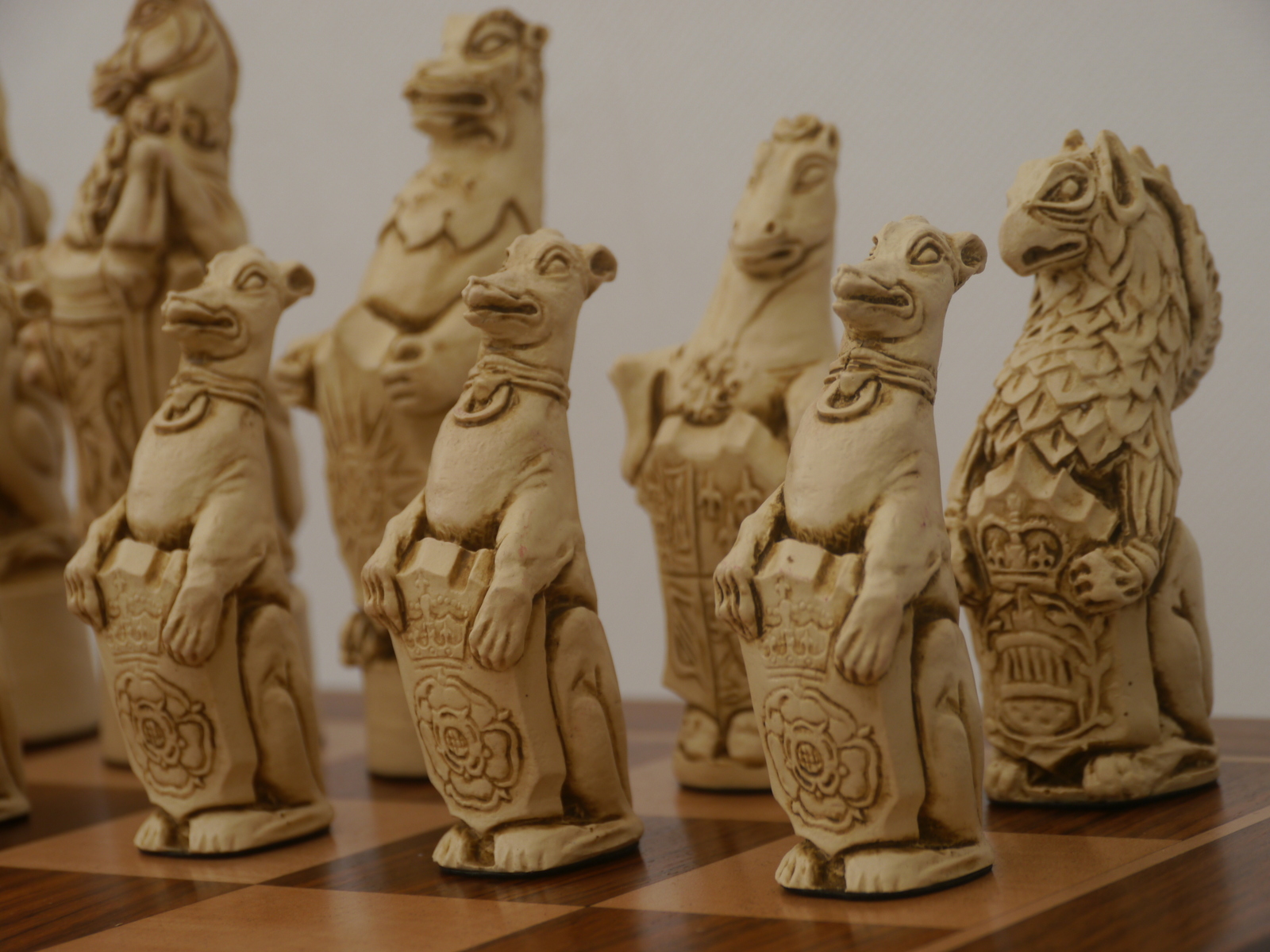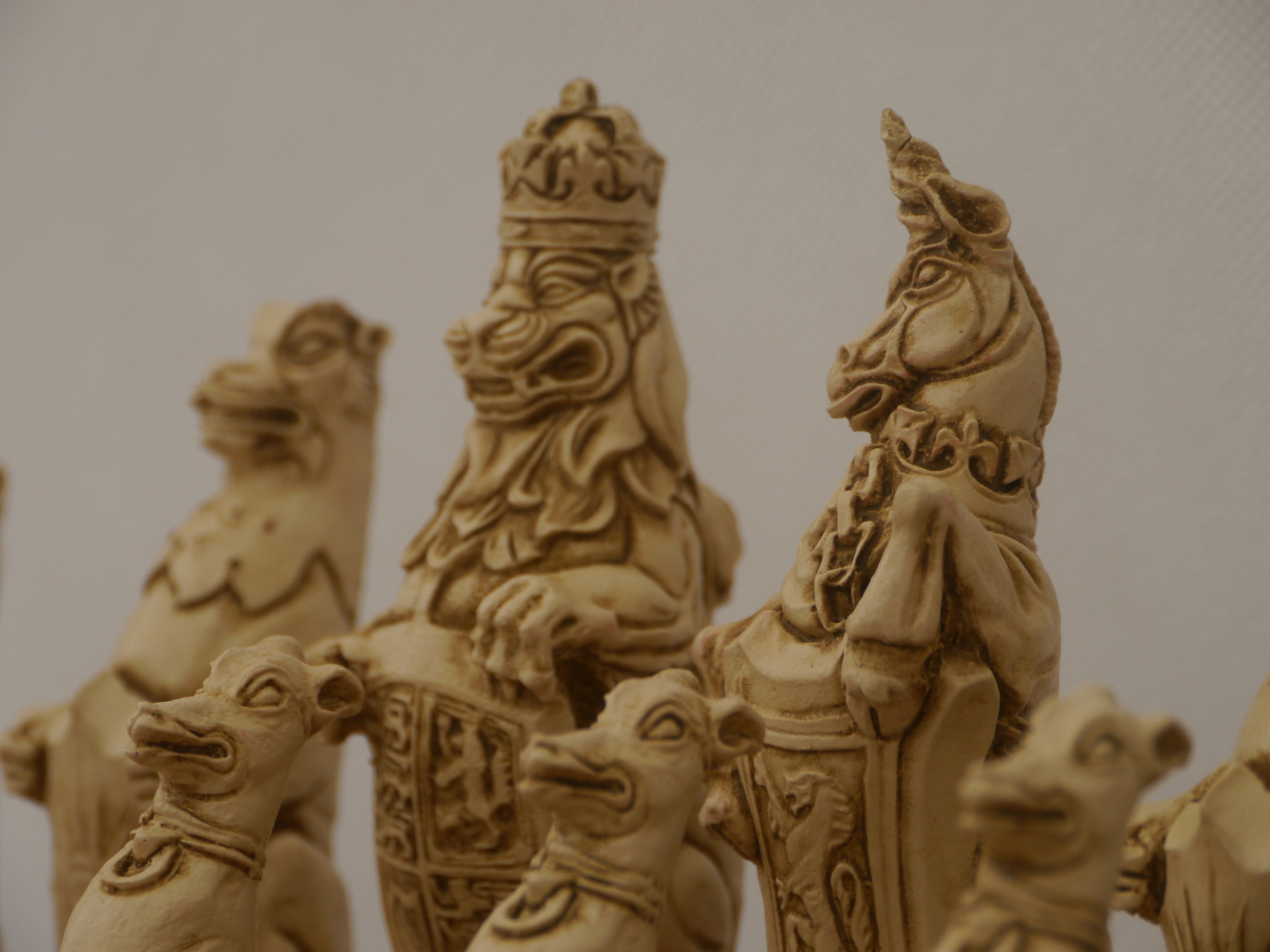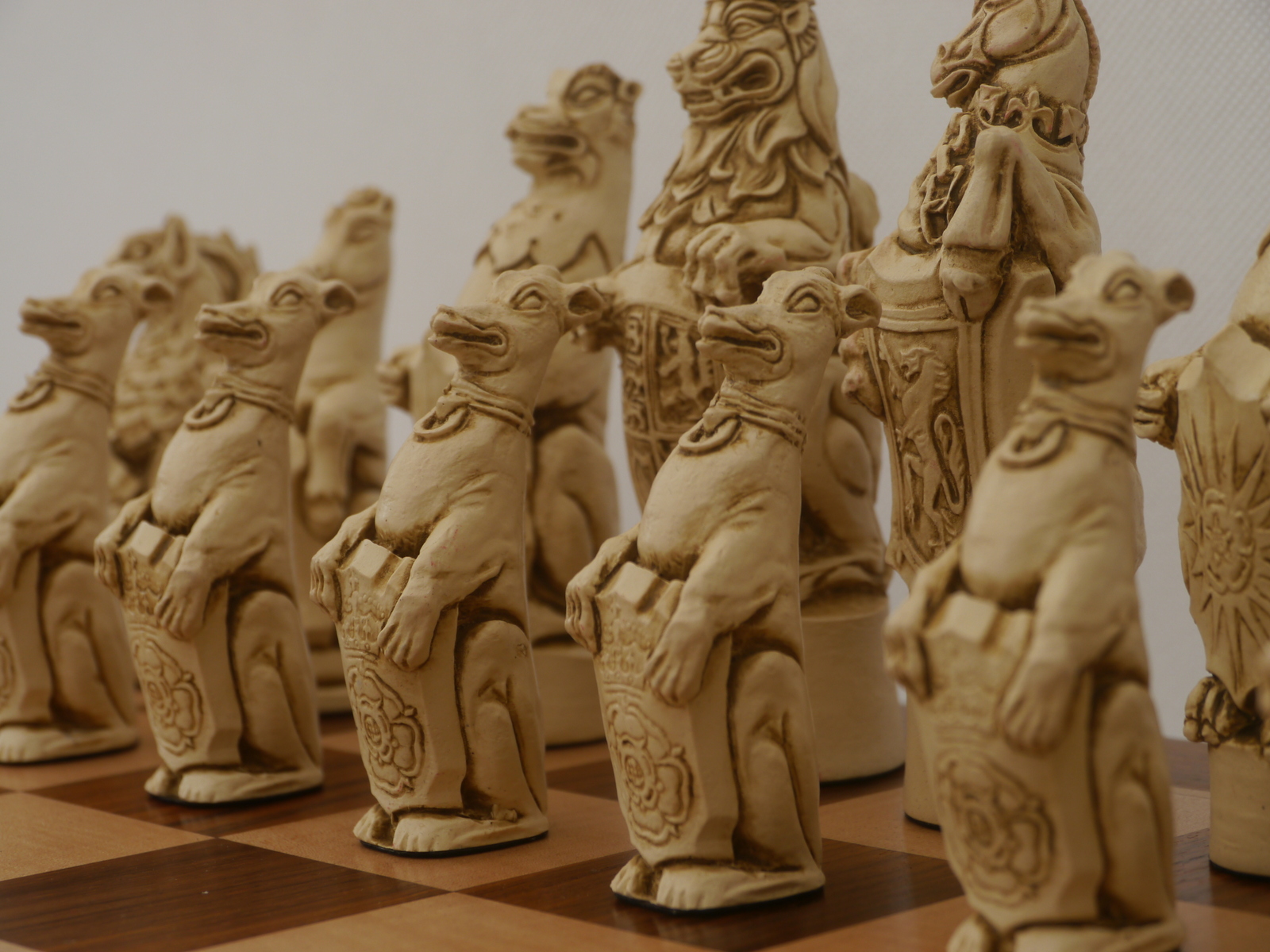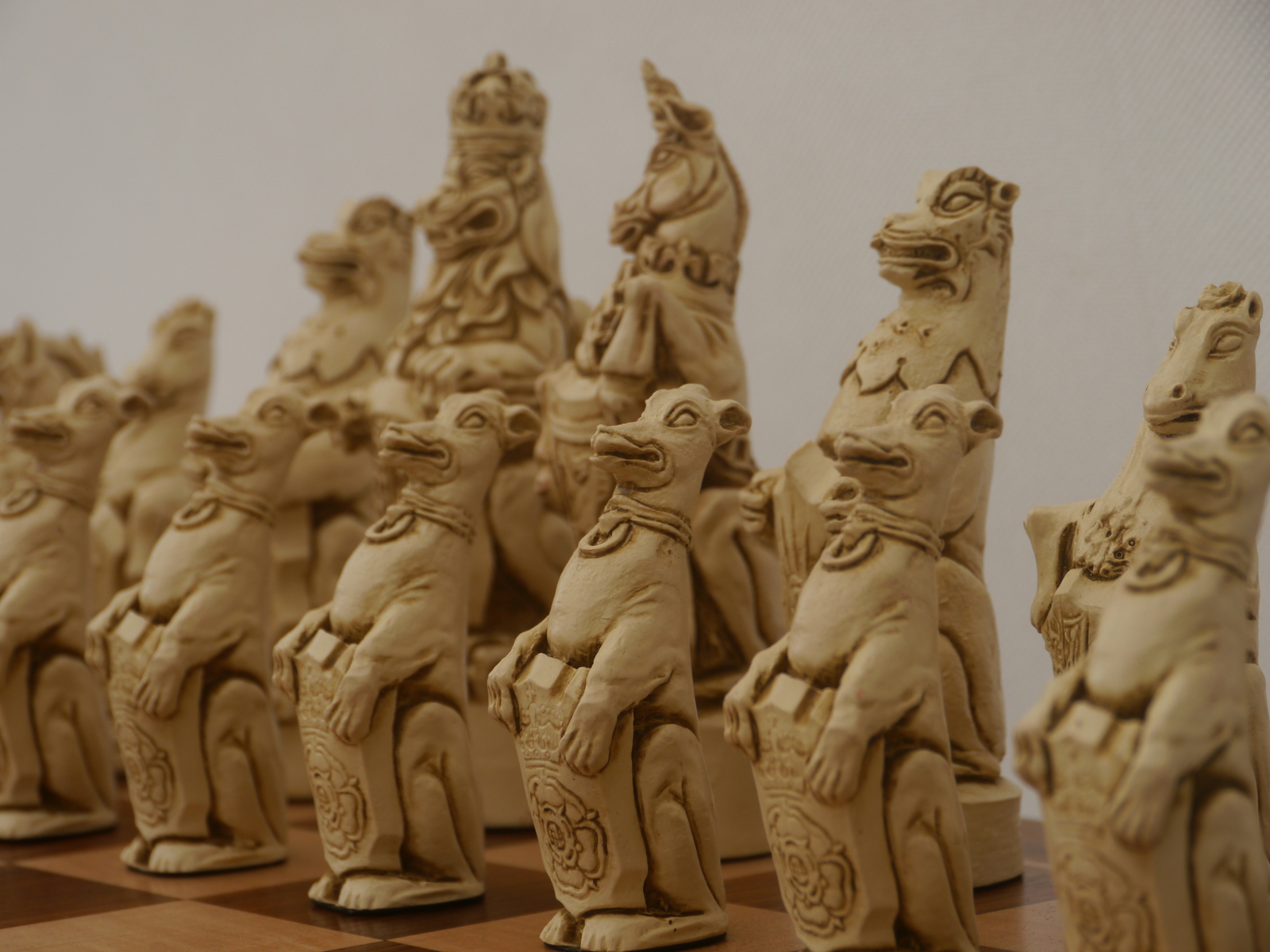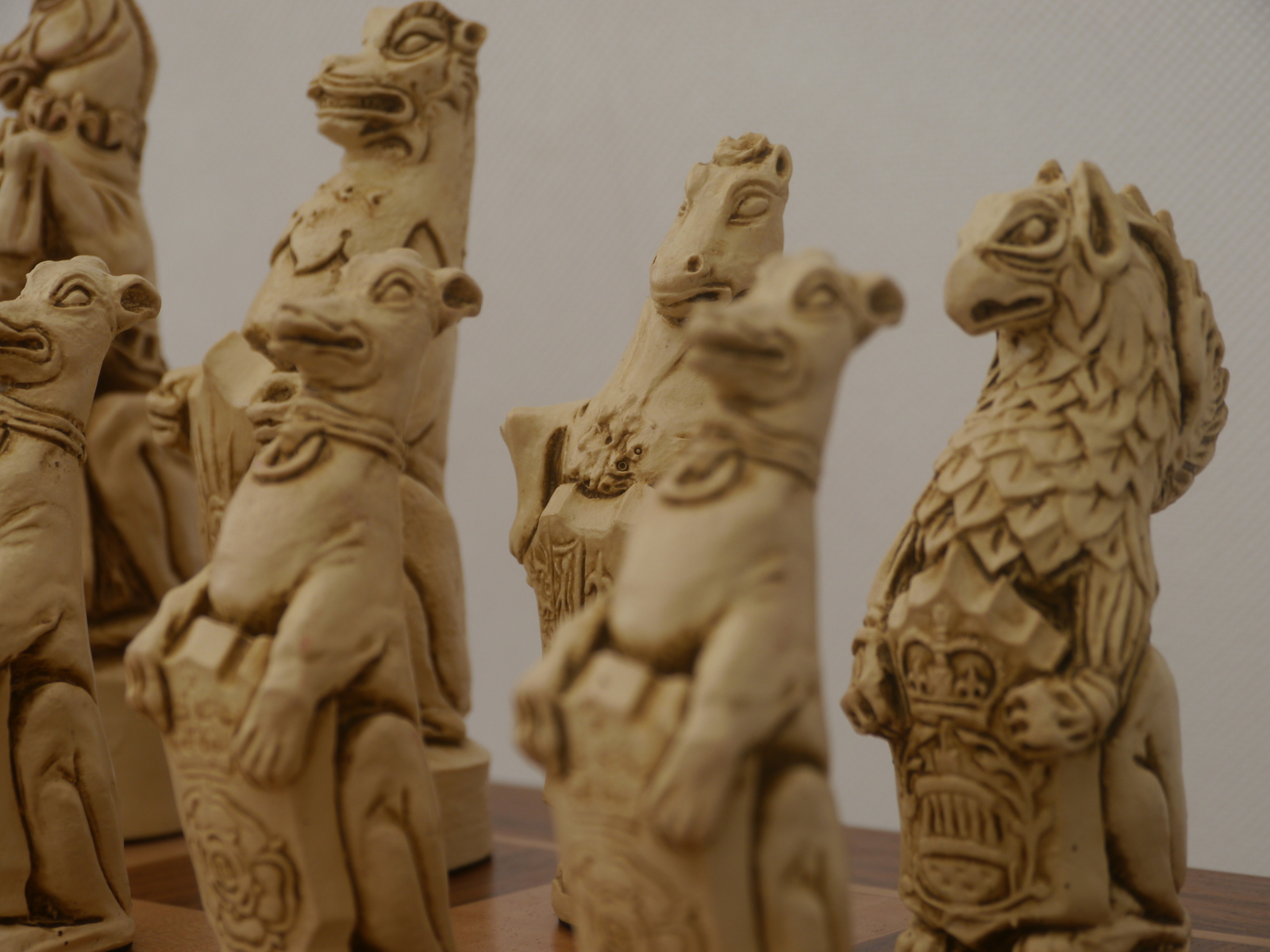BC2012: Royal Beasts – Brown
There are ten heraldic beasts that form part of the rich history of Hampton Court Palace. They were restored at the beginning of the twentieth century but were derived from originals made more than 400 years ago for Henry VIII and are generally called ‘the King’s Beasts’. King Henry VIII had numerous beasts decorating Hampton Court where the Queen’s own beasts now reside. When William III had the moat filled in during his reign of 1689 to 1702, he used the parapets of the bridge and the attending beasts as fill. In 1909 the moat was cleared and many of the beasts were recovered. The Queen’s ten were modeled after these creatures. One of the responsibilities of the beasts is to support various shields which themselves have symbols known as badges. These are like today’s logos. They identified those who worked for the royal family and were used to decorate ancient households on everything from textiles to gateposts.
The Royal Lion of England is a crowned beast. As the King of the beasts it has been the most utilized of decorative devices in royal history. The Queen’s own lion held the place of honour by the door to the Annex of Westminster Abbey where the Queen made her coronation entrance.
The Griffin is an ancient, beneficent mythical creature with the head of an eagle and the body of a lion. Griffin claws and eggs were said to change colour if they contacted poison and were highly valued by the ancient royals. Only the female Griffin has wings and provides service to the Queen.
The Silver Unicorn is a lunar emblem originating in Scotland and is known today as a symbol of purity, chastity and innocence. It is a supporter on the Royal Coat of Arms, in partnership with the Royal Lion of England, long considered a symbol of the sun. Thus the sun and the moon are both represented, balancing day and night in their supportive role on the Royal Arms.
The Falcon was often seen with fetterlocks, which were closed until the time of Edward IV. Edward ordered his son Richard, Duke of York, to use a white falcon perched in a gold fetterlock. The lock was slightly open to show that his father had forced the lock and gained the throne. This is how the lock is shown on the shield held by the Queen’s own falcon today.
The Black Bull was one of the Kings beasts featured on the bridge at Hampton Court where it held a Tudor rose and was one of the beasts used by Queen Elizabeth I.
The White Lion of Mortimer is distinguished from the Lion of England in that it does not wear a crown. Edward IV used the Lion as a supporter on the coat of arms with either a second lion or the Black Bull as companion.
The White Greyhound of Richmond was used, almost exclusively, by Henry VII, on flags, standards and as a supporter. At times the beast appeared with a second hound although more frequently with a dragon.
The Red Dragon of Wales is a creature representing outstanding strength, wisdom and power and is the badge of the heir to the crown.
The White Horse of Hanover has been used as a supporter of arms and although it is not included in the list of Royal badges, it is often used as a badge today in Her Majesty’s service. Given the royal love of horses, it is a fitting beast for Her Majesty’s stable.
The Yale of Beaufort is a creature resembling a goat with the unique ability to swivel its horns at will.
This beautiful and imposing chess set by Berkeley Chess has incorporated the main characters from these iconic statues with the chess pieces represented as follows:
King: Lion of England
Queen: Unicorn of England.
Bishop: White Lion of Mortimer & Black Bull of Clarence
Knight: White Horse of Hanover & Yale of Beaufort
Rook: Griffin of Edward 11 & Falcon of the Plantagents
Pawn: Greyhound of Richmond & Red Dragon of Wales.
Metrics: BC2012 Royal Beasts – Brown. King Height 5.8″ (15cm). King Dia 1.7″ (4.3cm). King Weight 243g (9oz)
Download High-Resolution Images of this model

